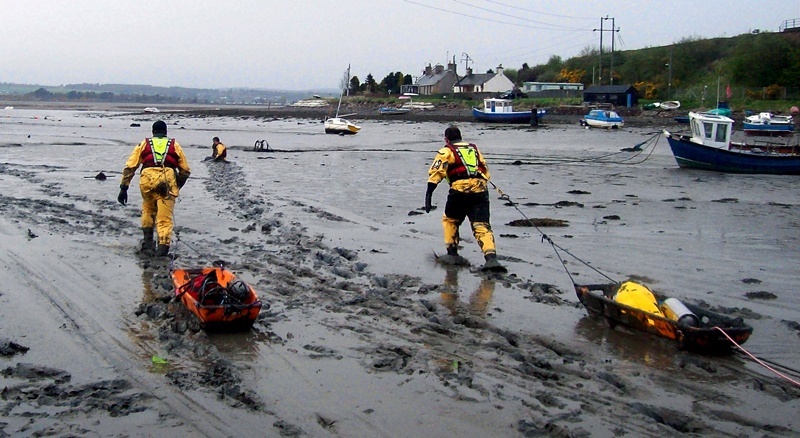Montrose Coastguard team is one of only three in Scotland trained and equipped specifically for mud rescue.
Mud in some areas of the tidal Montrose Basin is believed to be up to 30 or 40 feet deep and coastguards have been trained in the latest rescue techniques.
They have been testing a new rescue system and on exercise in the basin last week discovered it could be a life-saver even a few feet from the shoreline where the shifting mud flats can be dangerously deep.
One of the problems is the mud is always moving and an area that is solid one day can be sticky the next.
Volunteer rescue officers from Montrose and Arbroath took part in the training, which will be introduced across the UK.
By using an overshoe called a ‘mudder’ the officer’s weight is spread over a larger area, allowing him to walk more easily through the mud to the person trapped.
The use of personal flotation devices also allows officers to operate around the distressed person for longer on an incoming tide without the worry of possible drowning.
“Montrose Basin provides an ideal location for this training,” said sector manager Ross Greenhill.Trapped”Each year at least one person becomes trapped in the mud in the basin. The team do, however, operate further afield including the banks of the River Tay in Dundee.
“The Montrose team is one of only three with this capability in Scotland. The team have taken on this training well and should be fully operational with this new system very soon.”
Mops Pool, where locals believe the mud could be up to 30-40ft deep, has been the scene of a number of rescues and it was emergency in 1995 when two youngsters nearly lost their lives that prompted the formation of the rescue team.
In some cases when people are trapped for a lengthy period they can suffer compression injuries when the blood squeezed out of their legs by the mud then rushes back when they are freed.
The Montrose team use a flat bottom sledge kitted out with an air bottle and lance to get to the rescue.
The lance is pushed under the body of the trapped person then compressed air injected into the clinging vacuum to break the suction so they can be freed, put on the sledge then hauled ashore.
